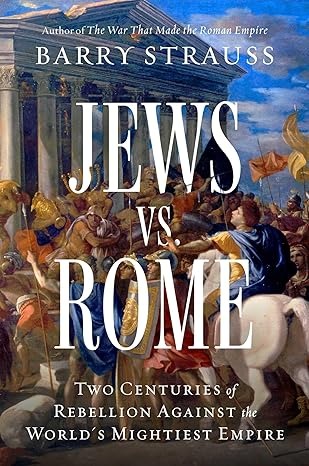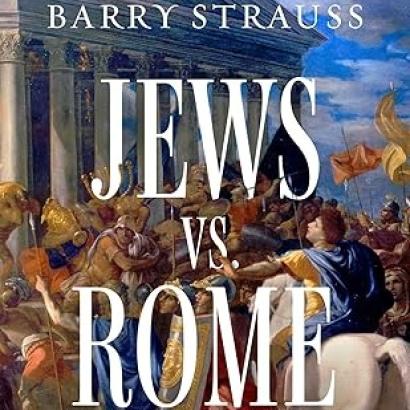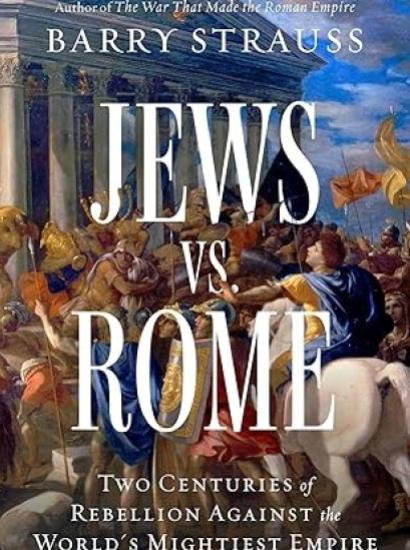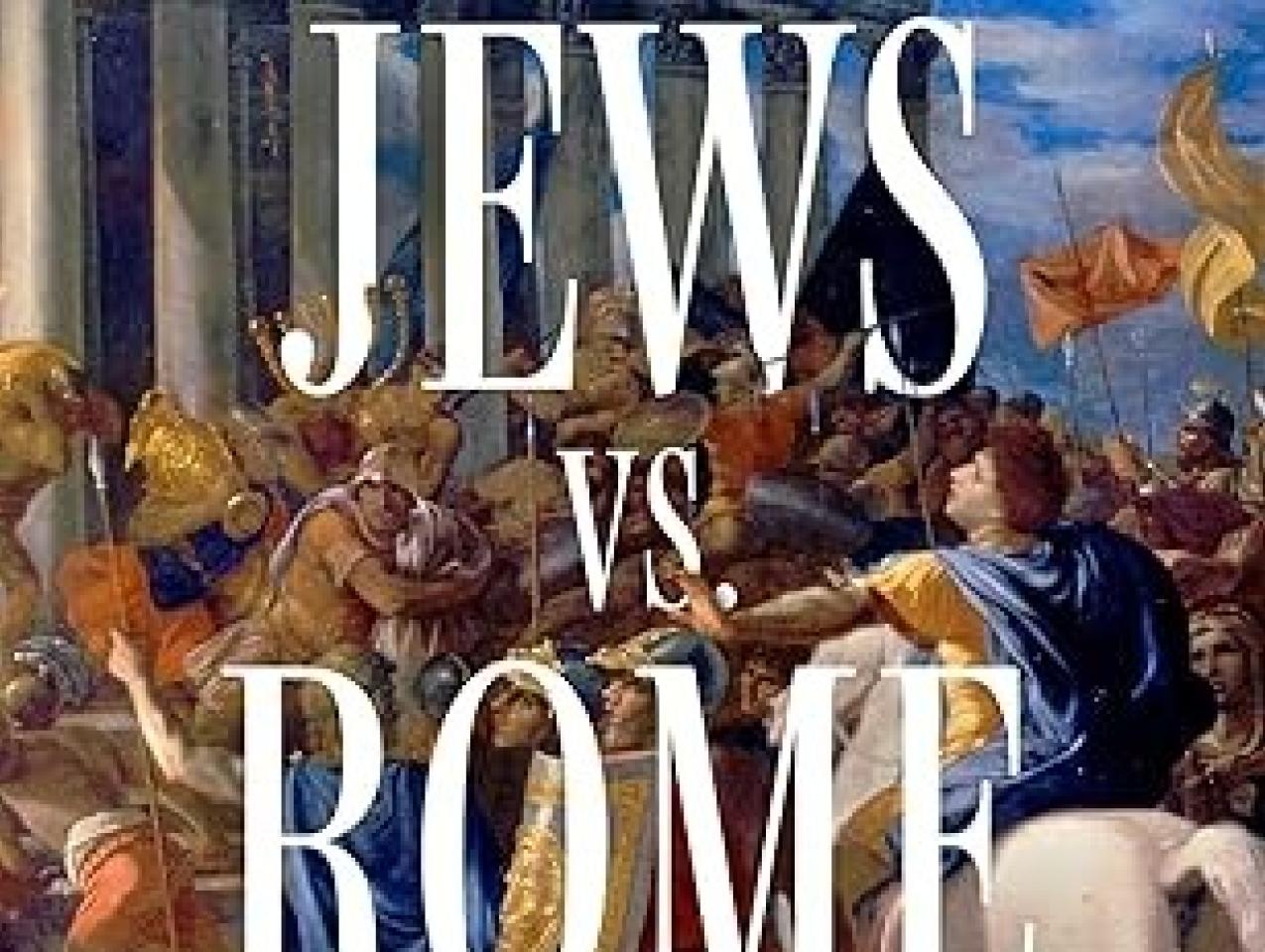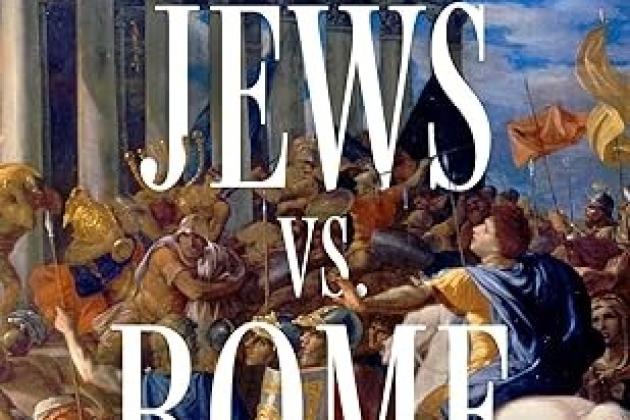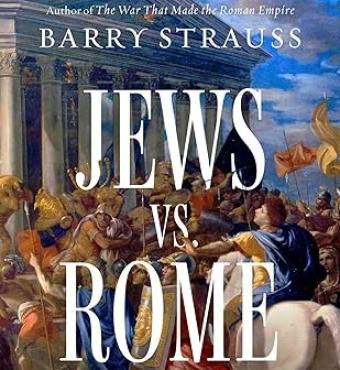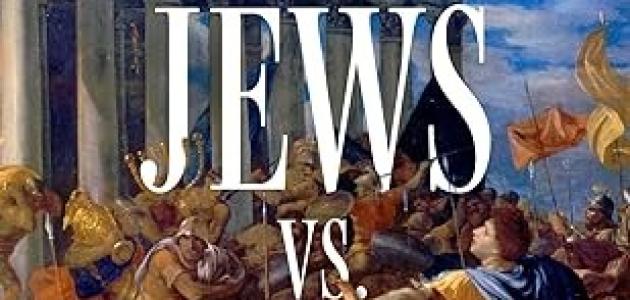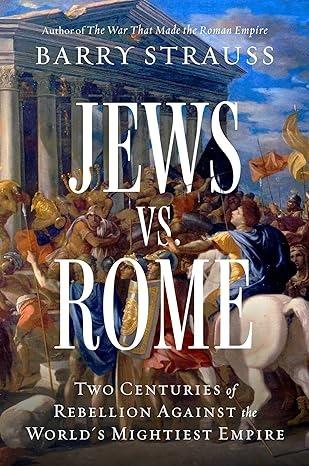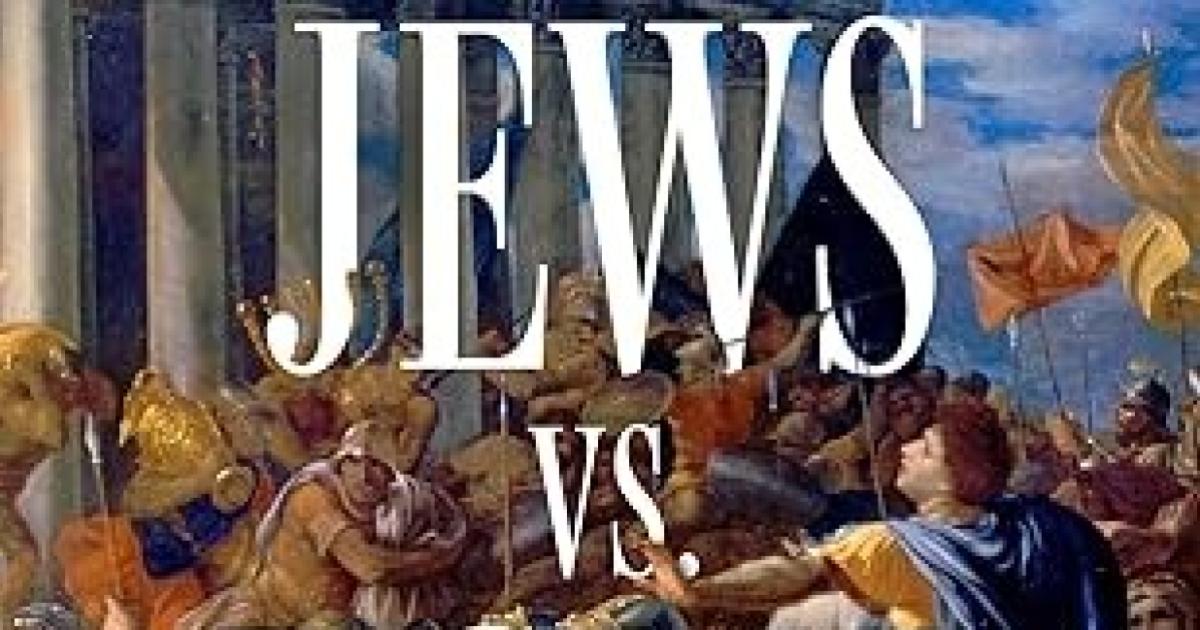This is an excerpt of Jews vs. Rome: Two Centuries of Rebellion against the World’s Mightiest Empire (2025, Simon & Schuster), a new book by Barry Strauss, the Corliss Page Dean Senior Fellow at the Hoover Institution. Strauss, who is also the Bryce and Edith M. Bowmar Professor of Humanistic Studies (Emeritus) at Cornell University, is a recipient this year of the Bradley Prize. Reprinted by permission.
It was an age of unscrupulous intrigue and messianic longing, of empire and insurrection, and of geopolitical warfare that still has modern echoes.
The era from 63 BCE to 136 CE marked two centuries of violence and revolution. They witnessed the decline and fall of the Roman Republic, the rise of Rome of the Caesars, and its continuing wars for dominance against the Iranian empire of Parthia, the only imperial rival to Rome left after the conquest of Carthage and the Hellenistic kingdoms. Caught in the middle, both geographically and politically, was the cauldron of tiny Judea—home of Rome’s most determined insurgencies and the soil from which the seedlings of both rabbinic Judaism and Christianity would begin to grow.
Judea was fighting for its survival as a religion, a people, and a nation. It was caught between countries and empires many times its size and strength, negotiating among ever-changing allies and enemies and facing mutual hostility with its neighbors. Because Judea was not a unified state, it faced ethnic conflict within its own borders. Meanwhile, the dominant group in Judea, the Jewish people, fought among themselves for power, influence, and their own conceptions of a holy life.
For today’s reader, this story may seem painfully familiar. Certainly, the names of many battlefields are eerily the same in today’s news as in the pages of this book. The names of our story’s protagonists remain renowned, and the historical consequences of this era live on with us today. Nor were the challenges that confronted Judea two thousand years ago unique to that era. Small countries, and large countries, too, still face them in our time.
It is my hope that the history of this period, these people and these struggles, will offer context for the clash of civilizations we are witnessing today and forge a deeper understanding of the forces that propel them.
Two explosive centuries
It would be hard to exaggerate the degree of excitement, anticipation, anxiety, and bloodlust that echoed in this era. What an explosion of creativity and destruction! These were two of the most dramatic and consequential centuries in history. And for the Jewish people in particular, these centuries were cataclysmic.
For the Jews, it was an era of revolution—many small uprisings during more than a century, culminating in an era of three great wars: the Great Revolt, also known as the Jewish War, 66 to 74 CE; the Diaspora Revolt, 116 to 117; and the Bar Kokhba Revolt, 132 to 136. And against whom did the Jews revolt? Only against perhaps the greatest empire in history: Rome.
From the Scottish Highlands to the Atlas Mountains, from the Atlantic Ocean to the Euphrates River, and for a moment, even to the Persian Gulf, Rome ruled a vast realm. It governed what a Roman writer, Pliny the Elder, called “the immeasurable majesty of the Roman peace.” Fifty million people lived under Roman rule in what was then, along with Han China, the largest empire on earth. Among its other achievements, Rome conquered all the people around the Mediterranean Sea and united them under one government for the first and only time in history.
And yet during the space of seventy years, the Jews, one of the many peoples under Roman rule, revolted not once but three times. No other people in the empire—and there were many other rebel nations—had such a record. Two of the rebellions took place in the Jewish homeland, Judea, the third in the Diaspora, the emigrant communities of Jews.
Today people argue over the names Israel and Palestine, but that is nothing new. They argued over the country’s name in antiquity as well, with both Israel and Palestine attested long before Rome came on the scene. In the Roman era the country was commonly called Judea. The more ancient Jewish name for the country, which some patriots preferred, was Israel. It is attested as early as the thirteenth century BCE.
Most rebellions occurred in recently conquered provinces. Judea was different. It was not newly conquered. In fact, Rome subdued Judea in 63 BCE, more than 120 years before the Jewish revolt of 66 CE. And Judea had first became a Roman ally even earlier, in 160 BCE. Close observers should have seen the storm coming, what with so much unrest in Judea in earlier years. But in Rome, far away and preoccupied with other, bigger provinces, it came as a surprise.
The rebels of 66 CE humiliated the Roman legions. They first threatened, and then succeeded in contributing to a Roman defeat at the hands of the only rival empire that Rome still feared. They cost the legions a huge expenditure of blood and treasure before finally the rebellions were put down. A vengeful Rome responded with a savagery not seen since the destruction of Carthage two centuries earlier.
The rebels were freedom fighters, daring and heroic, and to that extent they deserve our admiration. But they were also murderous and deluded. The revolts were magnificent but misguided. How could the rebels hope to defeat the mighty Romans? They represented a great tide of anger and violence that sometimes turned on itself, at least in the Great Revolt, because that Jewish war against Rome was also a war of Jew against Jew: it was a Jewish civil war.
Singed by holy fire
For Jewish history, the rebellions against Rome mark a major turning point. They cost hundreds of thousands of Jewish lives and sent many of the survivors into slavery and exile. They reduced the Jewish people to secondary status in their own homeland. Indeed, the revolts put the future of Jewish survival there in question, although they did not end it. It’s a common misconception to think that the Romans finished the Jewish presence in the Land of Israel. They did not, but they did do an enormous amount of damage. Rome destroyed the Jewish capital, Jerusalem, and its crowning glory, the Temple. Rome ended the daily sacrifices that marked the heart of Judaism and ruined the priesthood who carried them out. Rome decimated the largest and most prestigious Jewish Diaspora community in the Roman Empire, the Jews of Egypt. As if to add insult to injury, the Romans changed the name of the country from Judea (“land of the Jews”) to Syria Palaestina, or simply Palestine (“land of the Philistines”).
In no other case did the Romans punish a rebellious province by changing its name. Then again, no people had rebelled as often as the Jews.
There is a holy fire, burning in the hearts of warriors, that leads to glory or oblivion. For two centuries it burned in the hearts of the nation that is the subject of this book, the Jewish people. Messiahs added to the conflagration. Even priests, resistant at first, grew dazzled by the white-hot light. Sober men saw the fire’s destructiveness and tried to douse the flames. None succeeded.
It was left to the Romans to drown the blaze in rivers of blood. Only then did a new generation of rabbis emerge from the ruins and turn the fire into light. At the same time, another offshoot from the Jewish experience of this turbulent era also began to grow: Christianity.
The Jewish people survived, learning how to become a religion without a state. Then, twenty centuries later, they created a sovereign state in their ancestral homeland, Israel. The survival of the Jews is one of history’s great cases of resilience. Paradoxically, the same spiritual fire that drove some men unwisely if bravely into an unequal contest against an unyielding empire was the same spirituality that inspired Jewish endurance over the millennia.
Our story begins in 63 BCE, when Rome conquered Judea. At the time, Judea was an independent country and proud of its hard-won independence from its Greco-Syrian overlords, making it the first independent Jewish state in more than four centuries. Now Rome took that away. Most Jews greatly resented that loss. The result was a constant roiling discontent that occasionally broke out into outright rebellion—and this was before the Great Revolt began in 66 CE. There was a seemingly endless cycle of dissidents, rebels, and prophets of change. Messianism grew popular. To maintain control of Judea required constant vigilance by Rome, through the measured application of carrots and sticks, and via the help of local collaborators. It all worked until it didn’t.
In 63 BCE, the Great Revolt was over a century away, but all the elements were present in embryo: Roman aggression, Jewish division between acceptance and rebellion, Parthian intervention, power politics and messianic hopes, ethnic conflict between Jew and Gentile in Judea. The same themes would be sounded over and over again for the next two centuries. To understand them, we need to begin at the beginning.







